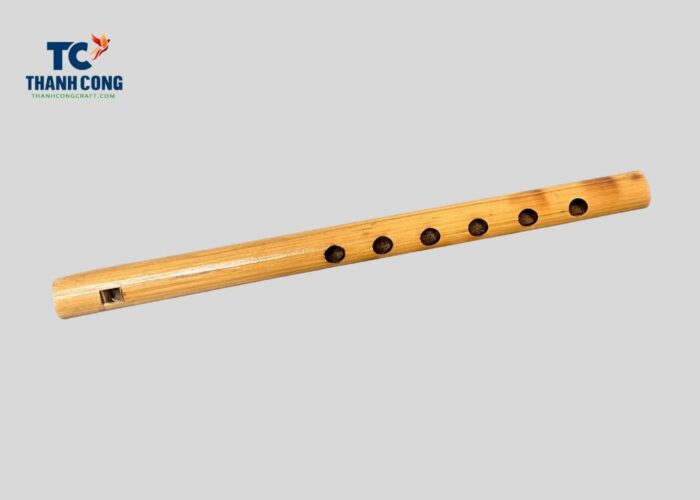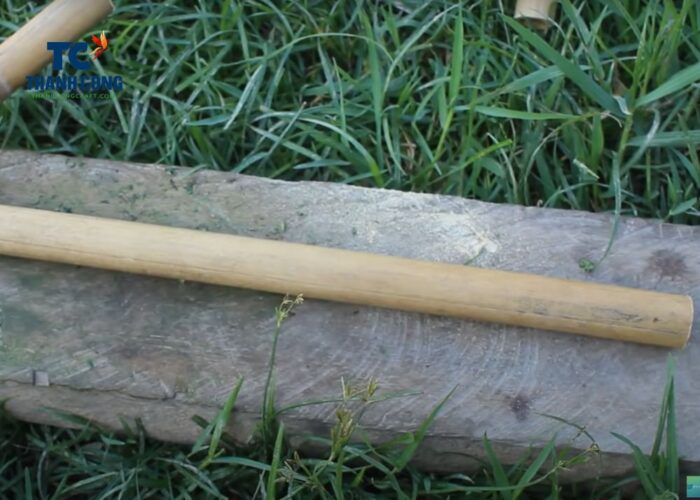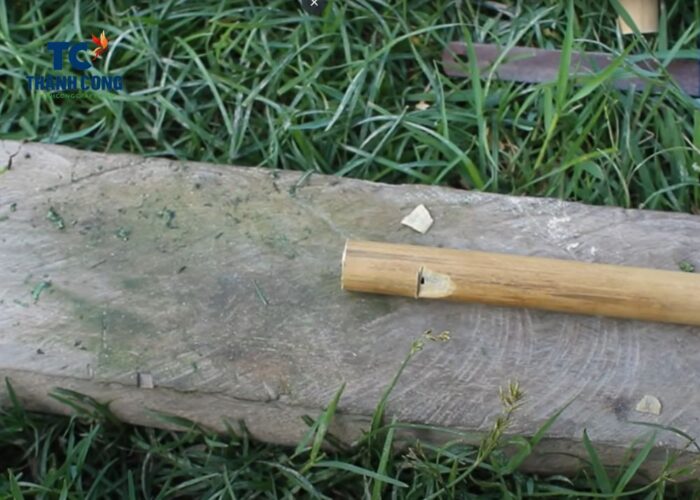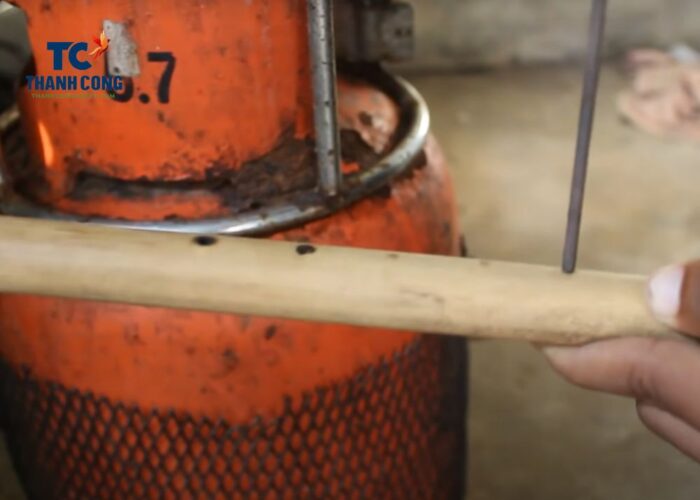How do you make a bamboo flute? A bamboo flute is a type of wind instrument made from a bamboo stem with holes drilled. In this article, we will guide you how to make bamboo flute step by step at home with some simple tools. Have a read!
Contents
1. What materials do you need for a bamboo flute?
To make a bamboo flute, you need to prepare the following materials:
- Select a suitable bamboo stem. Ideally, it should be dry, straight, and without cracks or nodes that could affect the sound.
- Ruler or tape measure to mark the precise locations for holes.
- Hacksaw or bamboo saw to cut the bamboo to the desired length.
- Electric drill with drill bits of varying sizes to create the finger holes.
- Beeswax, paraffin wax, or a similar substance to seal the inside of the bamboo and enhance the sound quality.
- Fine Sandpaper used for smoothing the exterior and interior surfaces of the bamboo.

2. How to make bamboo flute?
To make a bamboo flute, select a piece of bamboo with a diameter ranging from 1.3 to 2 cm and a length of approximately 50 cm, depending on your desired length. Punch seven holes, including one blow hole at the top and six additional vent holes.
Here are the detailed steps:
Step 1:
Choose a bamboo section that has a diameter of about 1.3 – 2 cm, without cracks, bends or wounds. Measure the length of the bamboo section, it should be about 50 cm depending on the pitch you want.

Step 2:
Cut the top and bottom of the bamboo section so that they are about 2-3 cm away from the edges. Use a sharp knife or a drill bit to make a blowing hole in the middle of the top end of the bamboo section. The blowing hole should have a diameter of about 1 cm.
Step 3:
Measure the distance from the blowing hole to the bottom edge of the bamboo section, divide it into 7 equal parts. Use a pencil to mark the dividing points. These will be the positions of the finger holes.

Step 4:
Use a sharp knife or a drill bit to make the finger holes according to the marked points. The finger holes should have a smaller diameter than the blowing hole, about 0.5-0.8 cm. You can adjust the size and position of the finger holes to create the desired pitch.

Step 5:
Smooth the edges of the blowing hole and the finger holes with sandpaper or a scraper. You can also paint or decorate the bamboo section as you like.
Step 6:
Try blowing into the blowing hole and pressing the finger holes to check the sound of the flute. If the sound is not satisfactory, you can adjust the size and position of the finger holes accordingly.
3. FAQs
3.1 Is a bamboo flute with four or five finger holes?
A bamboo flute can have varying numbers of finger holes, and it’s not restricted to just four or five. The number of finger holes on a bamboo flute depends on its specific design and the musical scale it is intended to play.
Traditional bamboo flutes can have six finger holes, including one for the thumb on the back, while others may have more or fewer holes depending on their intended use and the desired range of notes. The design can vary across different cultures and musical traditions.
3.2 Do bamboo flutes need to be oiled?
Yes, it is recommended to oil bamboo flutes as part of their maintenance. Oiling helps to preserve the bamboo, prevent it from drying out, and enhances the overall durability of the flute. To undertake this process, it is advisable to select a natural oil such as linseed oil, tung oil, or mineral oil. Before applying the oil, it’s essential to clean the flute thoroughly, removing any dust or debris that may have accumulated.
Gently apply a thin layer of the chosen oil to the entire exterior of the bamboo flute, using a clean, soft cloth or a brush. Allowing the oil to be absorbed by the bamboo is a critical step, typically requiring a few hours or even overnight. This absorption process helps prevent the bamboo from drying out, ultimately reducing the risk of cracking.
After the absorption period, carefully wipe off any excess oil with a clean cloth. This step ensures that the flute is left with an appropriate and protective layer of oil. Depending on the climate and how frequently the flute is used, it may be necessary to repeat the oiling process periodically.
It’s important to exercise caution and moderation during the oiling process, as excessive oiling or the use of inappropriate oils can have adverse effects on the flute’s sound quality and playability.
3.3 Which is better: PVC or bamboo flute?
This depends on each person’s opinion. We need to consider many different factors, including sound, durability, price and aesthetics.
Some people argue that PVC flutes have better sound quality because they are harder and less affected by temperature and humidity. However, bamboo flutes have a more traditional sound and suit those who like folk music.
Bamboo flutes are also durable if well maintained and not infested by termites or cracked. In terms of price, PVC flutes are usually cheaper than bamboo flutes because they are mass-produced and easy to find. However, bamboo flutes have higher aesthetic value because they are handmade and have diverse shapes and colors.
Therefore, there is no right or wrong answer to this question, but it depends on the preference and purpose of each player.
In conclusion, crafting a bamboo flute is a journey that combines craftsmanship, precision, and artistic expression. So, gather your tools, select the perfect bamboo, and embark on a musical adventure that resonates with the echoes of ancient artistry.
If you have any further questions, please send thanhcongcraft an email us at info@thanhcongcraft.com or Tel/WhatsApp: +84967485411. Hope to serve you soon! Best regard!












